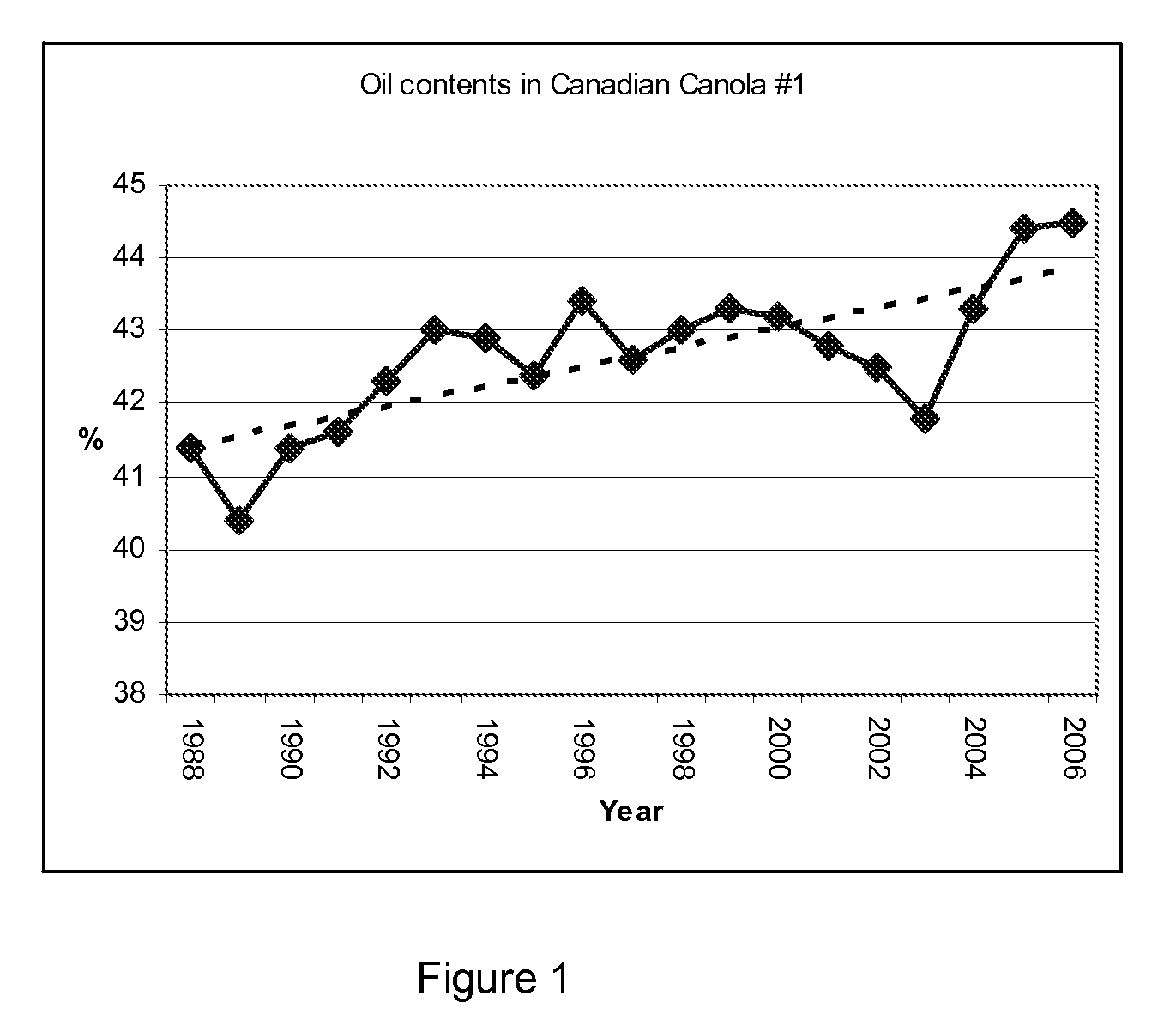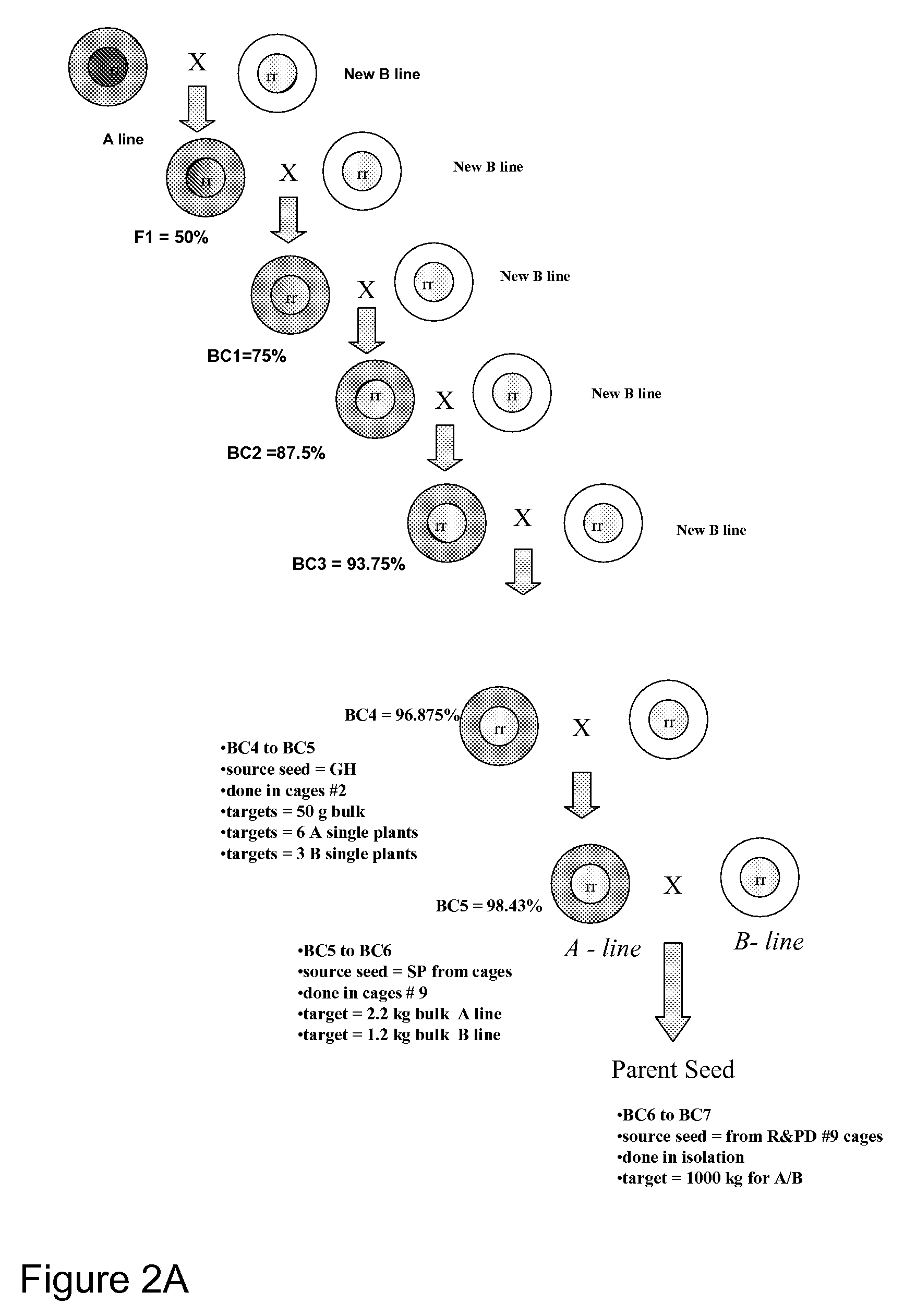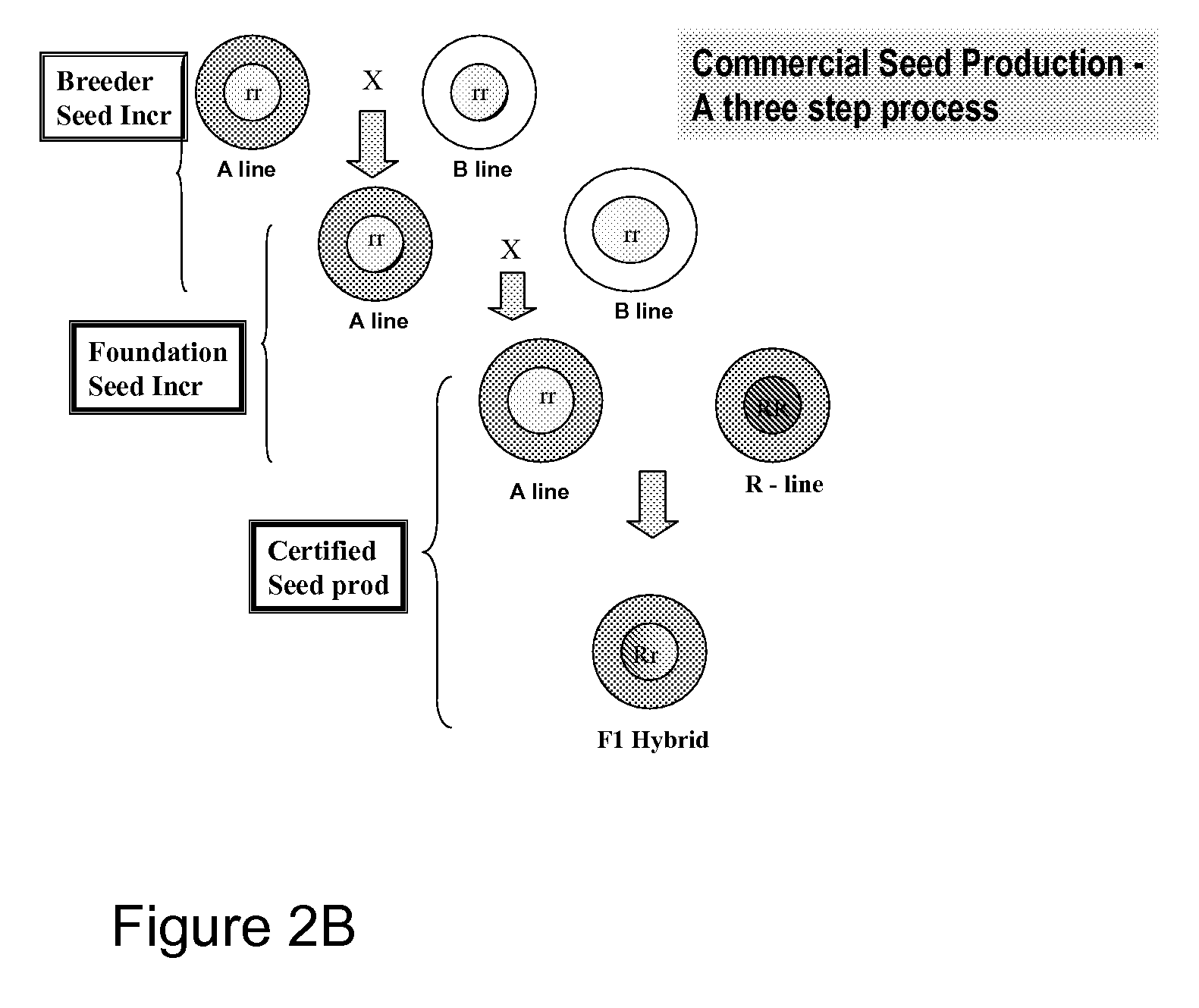High oil hybrid Brassica line 46P50
a high oil, brassica technology, applied in the direction of edible oils/fats, plant genotype modification, botany apparatus and processes, etc., can solve the problems of not trying to improve the quality of solid meal, rapeseed oil, and harmful effects on human health,
- Summary
- Abstract
- Description
- Claims
- Application Information
AI Technical Summary
Benefits of technology
Problems solved by technology
Method used
Image
Examples
example 1
Development of Maintainer Line (B Line)
[0074]The maintainer—B line 98DHS-2554 was developed using double haploids from a three-way complex cross ((Quantum×NS2052)×46A65). The doubled haploids were produced as is known to those skilled in the art, and for example, as described in Fan, Z., Armstrong, K. C., Keller, W. A. (1988) Development of microspores in vivo and in vitro in Brassica napus L. Protoplasma 147:191-199; Beversdorf, W. D., Charne D. G., Kott, L. S., Chuong, P. V., Polsoni, L. & Zilka, J. (1987). The utilization of microspore culture and microspore-derived doubled-haploids in a rapeseed (Brassica napus) breeding program.—In Proc. 7th Int. Rapeseed Conf, (Organizing Committee, ed), pp. 13. Poznan, Poland; and Huang, B. (1992) Genetic manipulation of microspores and microspore-derived embryos. In Vitro Cell Dev. Biol. 28:53-58, to name a few. Quantum and 46A65 are registered as commercial varieties in Canada while NS2052 is a proprietary non-registered breeding line compr...
example 2
Development of CMS Line Version of 98DHS-2554 (A Line)
[0078]After completion of the field nursery evaluation in 1999, several lines including 98DHS-2554 were selected to transfer to OGU (Ogura) cytoplasm by backcrossing. The objective was to convert 98DHS-2554 to a male sterile female line, so that it could be used in commercial hybrid production. The backcrossing was initiated in September of 1999. A breeding line carrying the OGU-INRA cytoplasm was used as a donor parent (female) and 98DHS-2554 was used as a recurrent parent (male—B line). The F1 was then used as a female and backcrossed to 98DHS-2554 to produce BC1 (see, FIG. 2a). The backcrossing was repeated six times under pollination controlled conditions. By the sixth backcross (seven doses of 98DHS-2554), 98DHS-2554 and resulting male sterile progenies (CMS version of 98DHS-2554) were genetically identical with the exception of the cytoplasm: 98DHS-2554 carried Brassica napus cytoplasm while 98DHS-2554-CMS carried the OGU-I...
example 3
Development of Male Restorer Line 00SNR17250
[0080]00SNR17250 was developed from a bi-parental cross (NW1717M×46A65) that was completed in 1996. NW1717M is a winter canola proprietary and low glucosinolates restorer breeding line which comprises the OGU-INRA CMS cytoplasm. It was developed in Pioneer Hi-Bred's winter canola program in France. 46A65 is a commercial spring variety in Canada. The F1 plants were vernalized for 5-6 weeks, grown in the greenhouse and were harvested in bulk. The F2 plants were also grown in the greenhouse and fertile plants (25% of plants were CMS) were individually harvested to produce F3 lines. The F3 lines were further advanced to the F4 generation in the greenhouse during 1998. The F4 lines were then evaluated in 1999 in a single replicated nursery experiment planted at the research facility in Georgetown, Ontario. The experimental protocol was similar to what has been described above for the B line development except the common check used in this exper...
PUM
 Login to View More
Login to View More Abstract
Description
Claims
Application Information
 Login to View More
Login to View More - R&D
- Intellectual Property
- Life Sciences
- Materials
- Tech Scout
- Unparalleled Data Quality
- Higher Quality Content
- 60% Fewer Hallucinations
Browse by: Latest US Patents, China's latest patents, Technical Efficacy Thesaurus, Application Domain, Technology Topic, Popular Technical Reports.
© 2025 PatSnap. All rights reserved.Legal|Privacy policy|Modern Slavery Act Transparency Statement|Sitemap|About US| Contact US: help@patsnap.com



